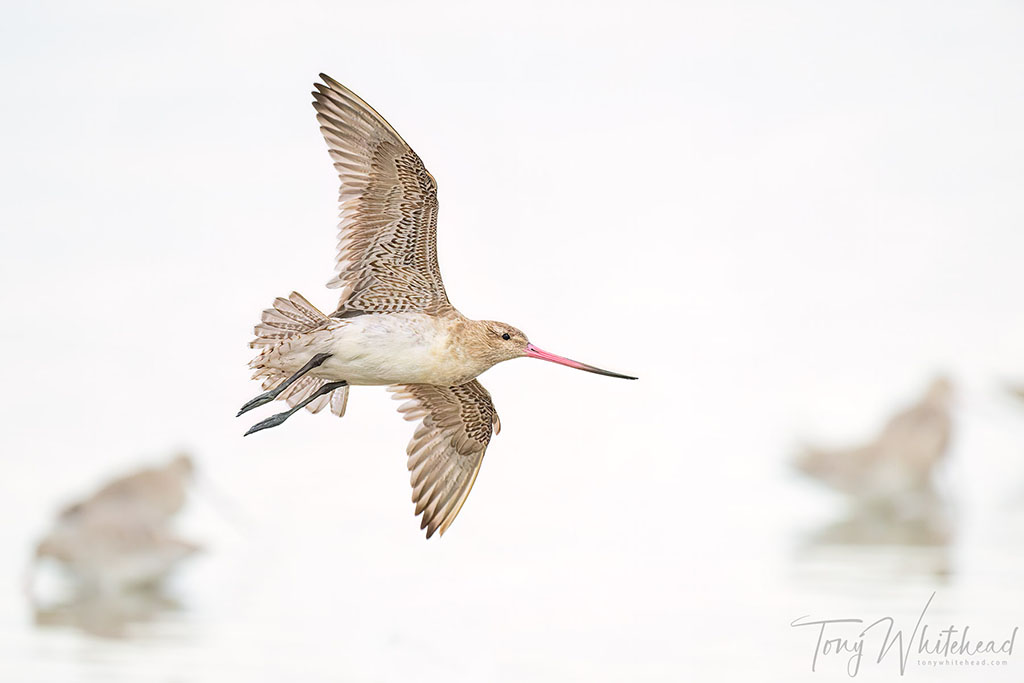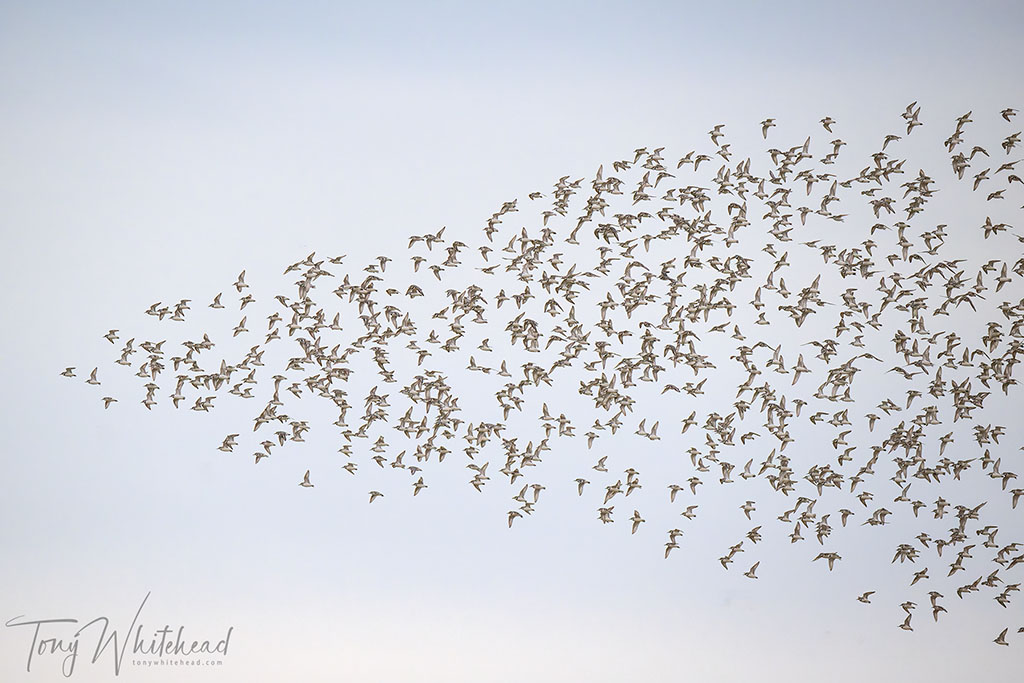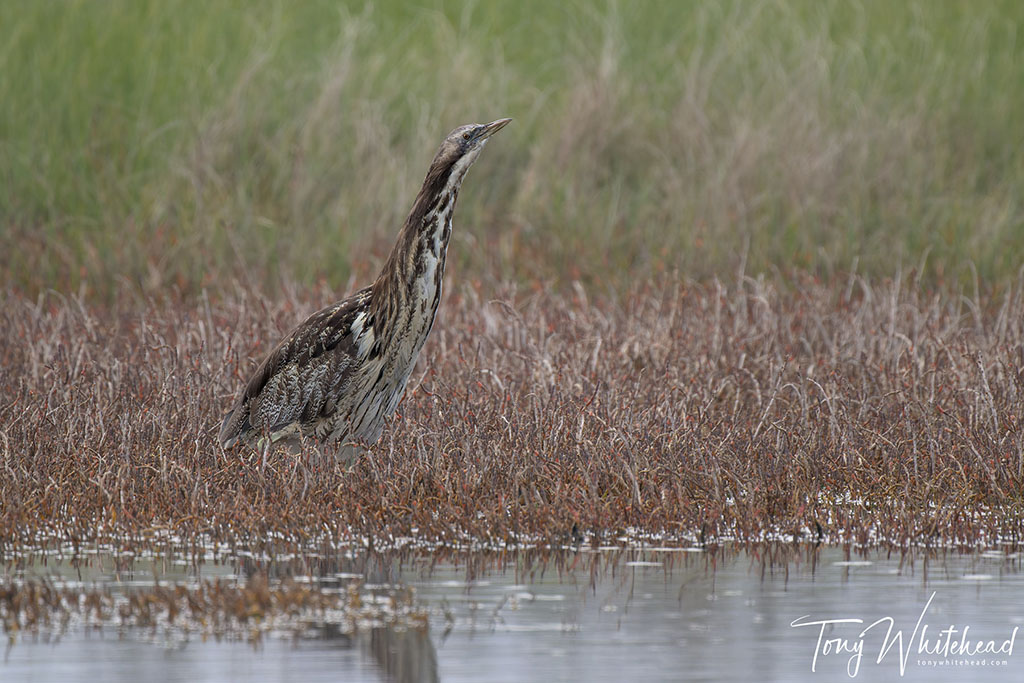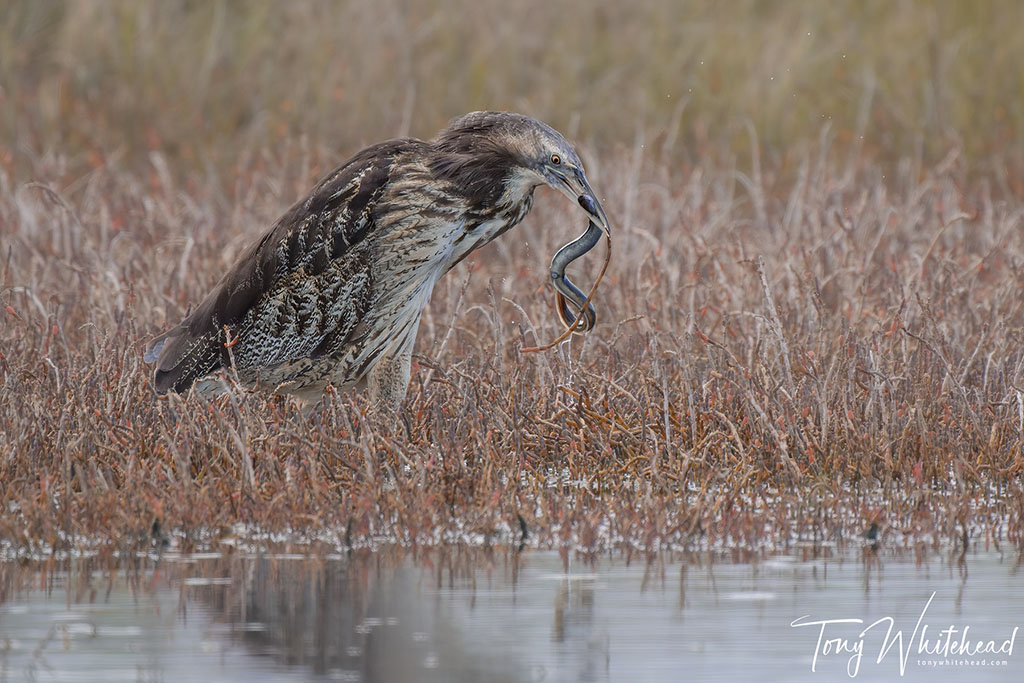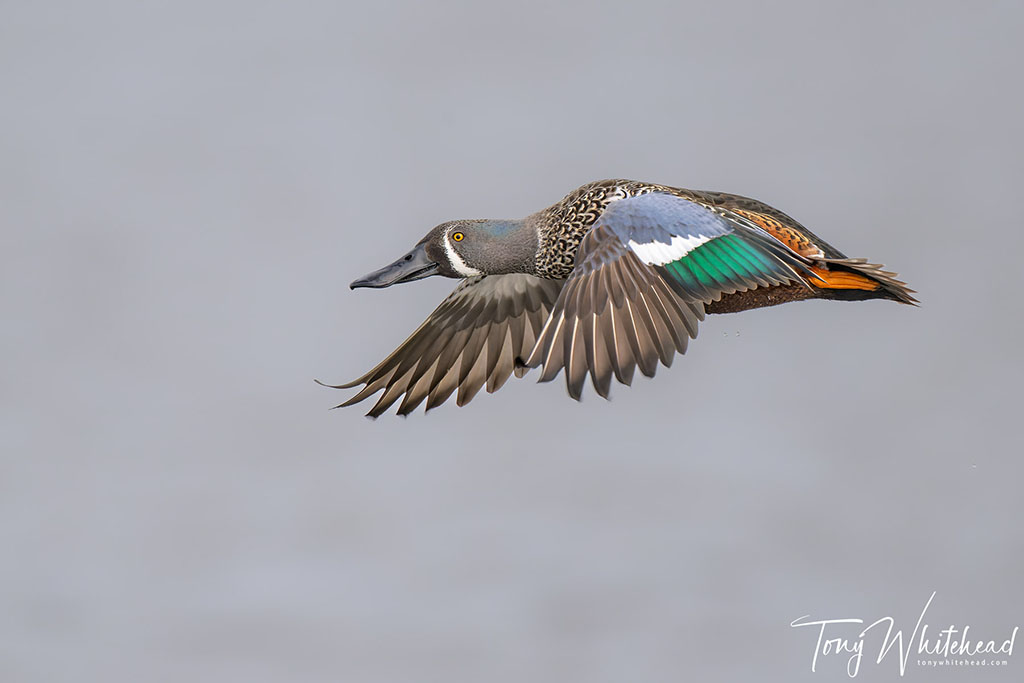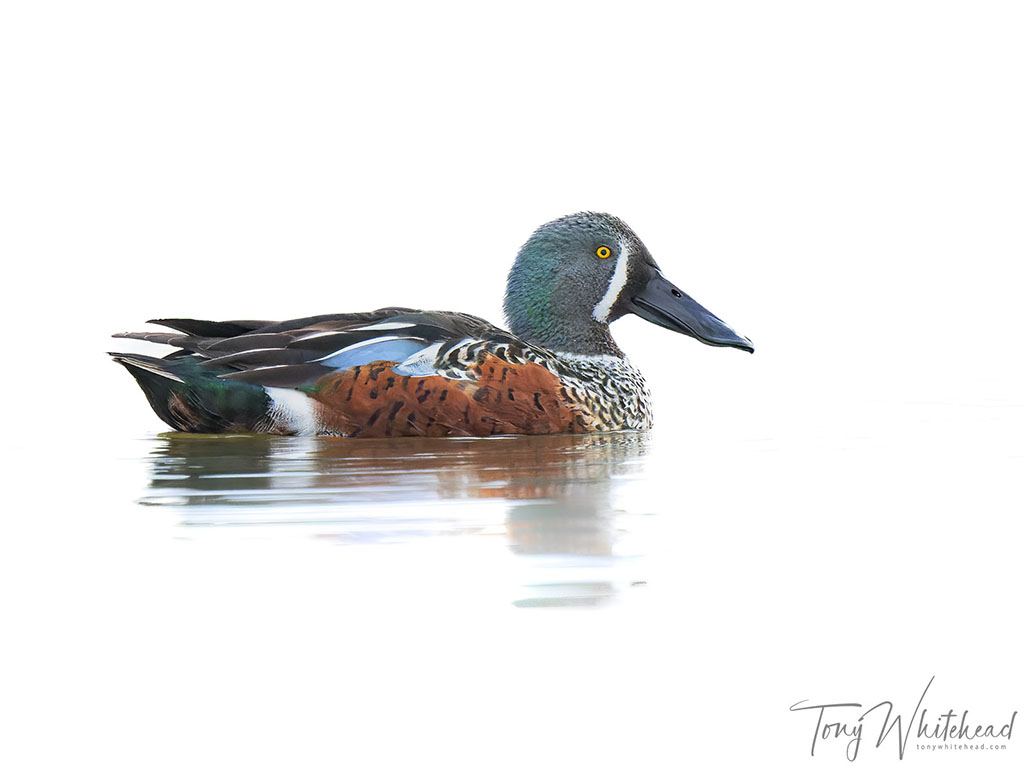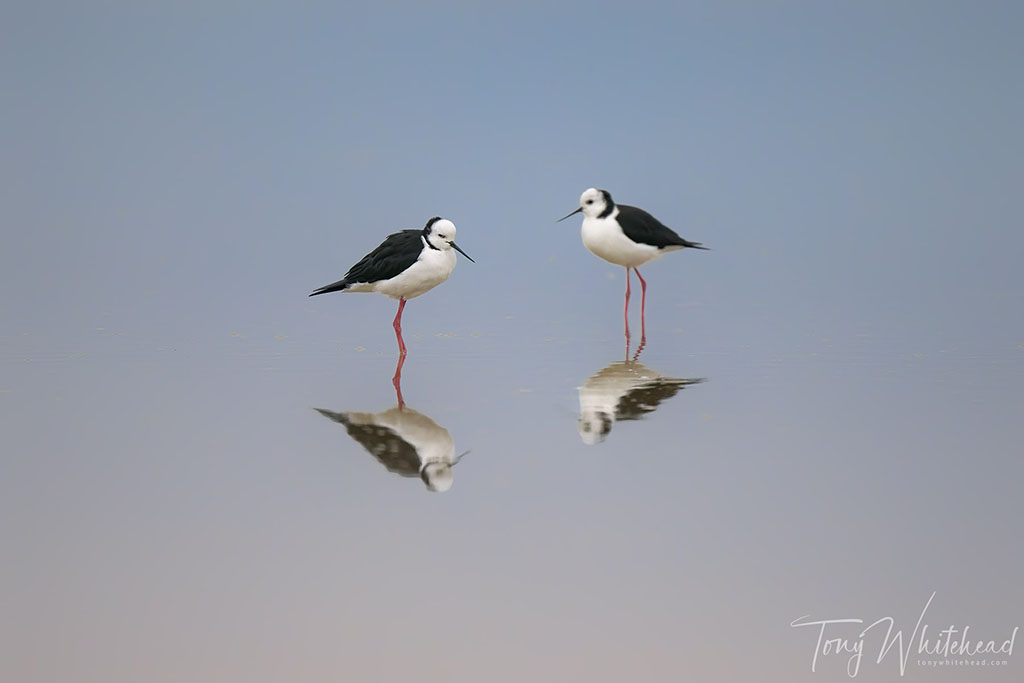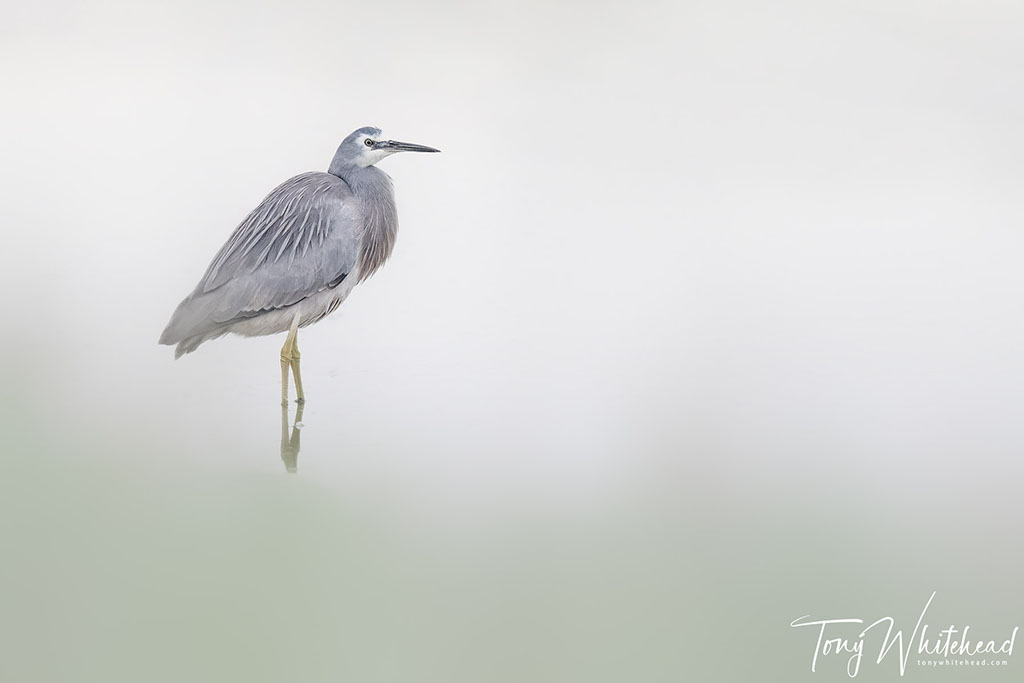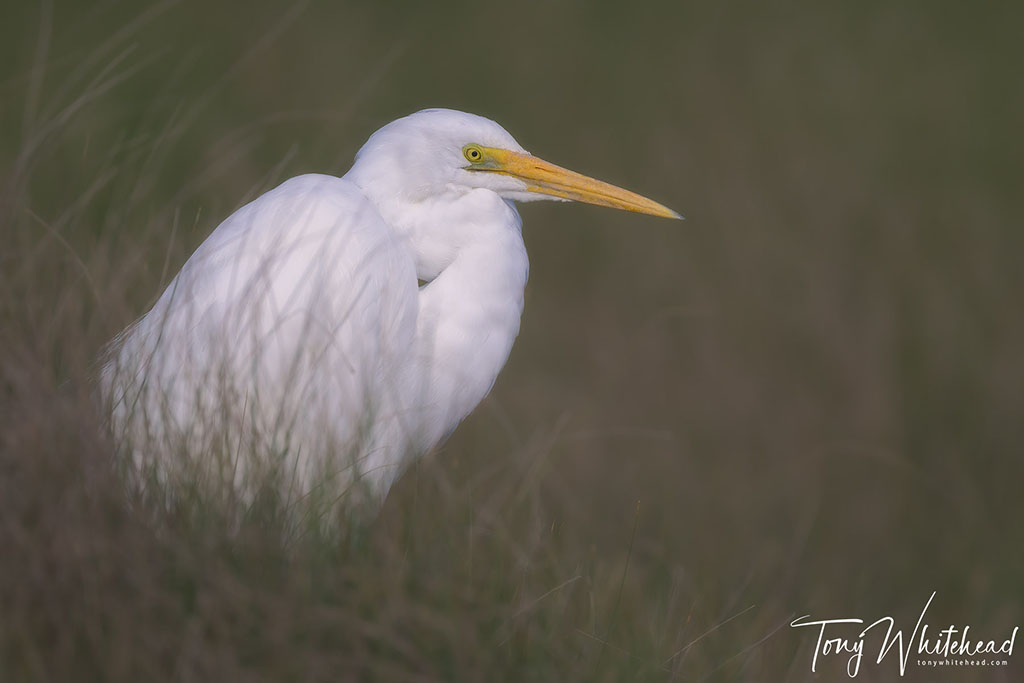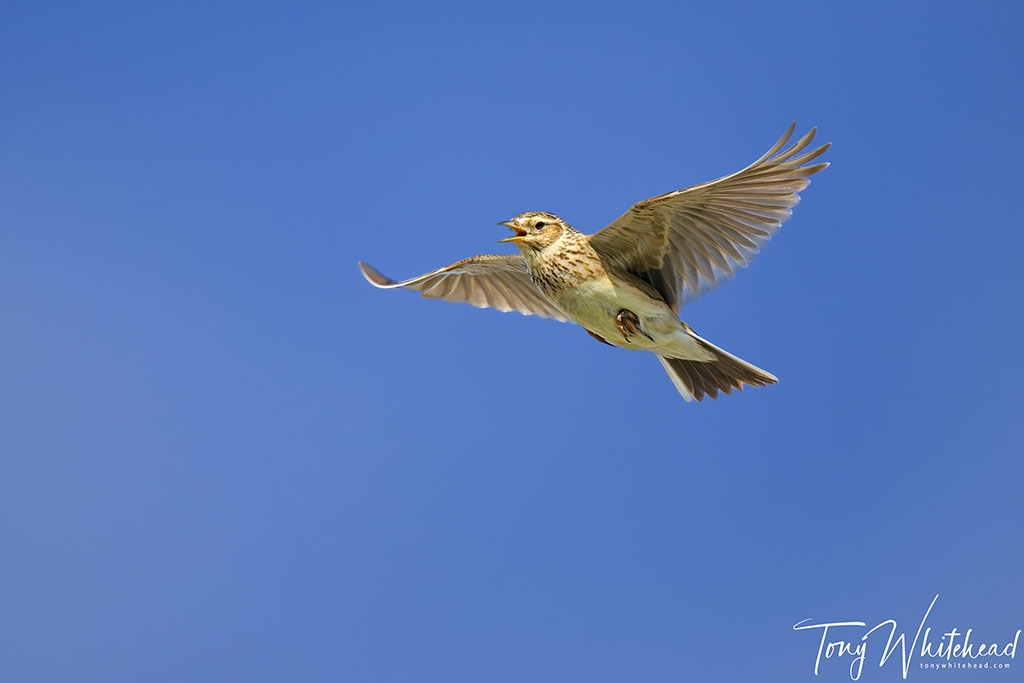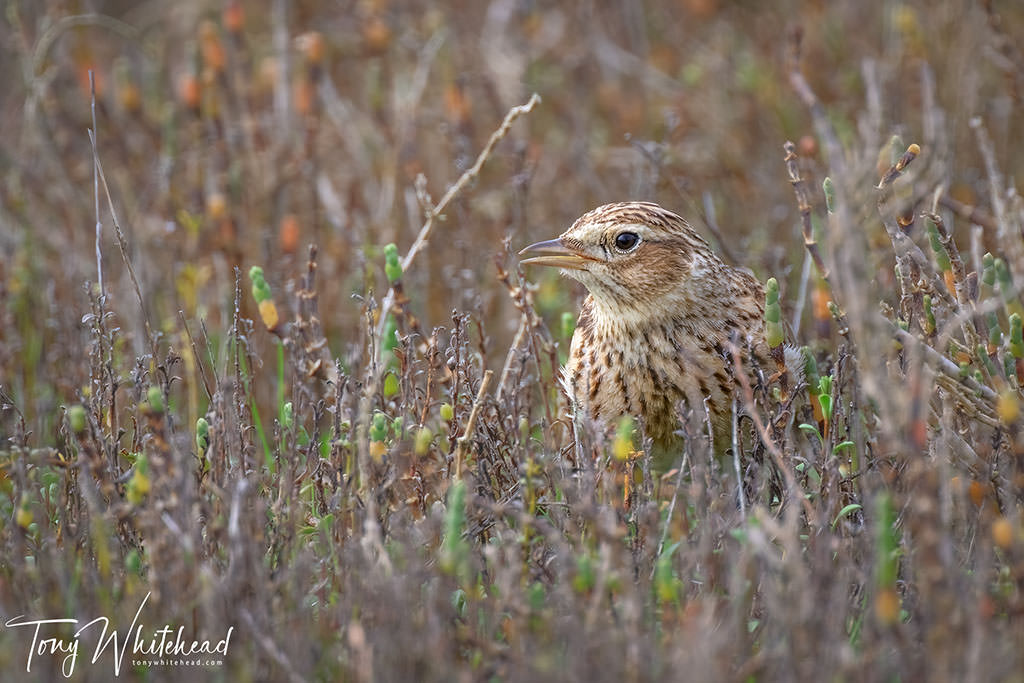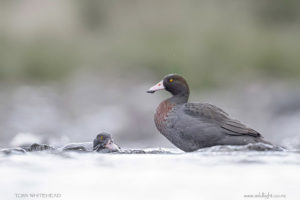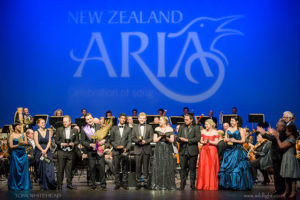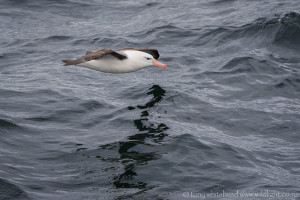There can be little debate that Pūkorokoro/Miranda is one of Aotearoa/New Zealand’s iconic birdwatching sites. As one of the major areas of feeding mudflats for Kuaka/Bartailed Godwit and Red Knot at the Southern end of the East Asian Australasian Flyway it hosts thousands of international migrant shorebirds over the summer. In addition it hosts local New Zealand migrants such as Wrybill and South Island Pied Oystercatchers that move between our major islands during the course of the year.
For birdwatchers this provides a fertile habitat for impressive sightings with the the constant possibility of something unusual amongst the crowd. Circumstances ideal for birdwatching don’t always translate into good bird photography locations. I have been visiting Pūkorokoro/Miranda for years and over that time have found it less and less appealing for photography. I have written on this before but a recent visit has made me reconsider the situation so I thought I would share an update on my thoughts.
The biggest change with time has been the inability to access low shooting positions. Previously it was possible to arrive early in the morning and belly crawl to the edge of the ponds (through mud and bovine output – there were still cattle grazing the reserve then) and wait for the sunrise to reveal what was there. If conditions were right there was opportunity for lovely intimate low level images in early light (even if the price paid was 6 months of pain from a pinched nerve in the neck due to prolonged awkward posture). It was also possible to access the edge of the shell bank to achieve low angles over the mudflats.
Nowadays the reserve is a very different place with no wandering cattle and humans restricted to well formed paths and hides. This is a vastly better habitat for the birds but limits some photographic opportunities. It is tempting to focus on lost opportunities but in fact others open up and the mark of a good photographer is adapting to the opportunities.
My latest visit was a stay of 2 nights and parts of 4 days spent in the reserve. Hopefully sharing a few of the images I made will help convince you that Pūkorokoro/Miranda remains a very worthwhile bird photography destination.
The highlight of this visit was the opportunity to photograph a Matuku/Australasian Bittern. My previous views of the species have been distant or in rapidly departing flight so it was lovely to spend some time watching this individual hunt in relatively open habitat.
The next most exciting subject for me were the good numbers of Kuruwhengi/Australasian Shoveller. They were in courting mode with the males making repeated short flights giving multiple opportunities for flight images.
Kuruwhengi/Australasian Shoveller are arguably our most beautiful ducks but can often be quite wary. It has taken me a long time to get photos that I am happy with let alone flight images. Calm conditions also gave a chance for an image for my Birds on White series.
The fact that the ponds are known as the Stilt Ponds hints that this is a good venue for Pied Stilts. While the low angle shots are no longer available there remains plenty of opportunity for flight shots or minimalist images with reflections on smooth backgrounds.
Good numbers of Matuku moana/White-faced heron also offer flight shots and clean wading images.
Kotuku/White Heron is always a possibility. On this occasion it made an appearance when we dropped in briefly while passing. Being a very relaxed individual that was completely unfazed by passing pedestrians on the path, it gave time to explore a few options. I suspect it is the same bird that I have photographed here a number of times in the past.
One of the delights of wandering around at Pūkorokor/Miranda is the sound of Kairaka/Skylarks. There are so many that it sounds as though the sky is singing because on looking up the birds are too small to easily see.
There are plenty of options to photograph them singing in flight, dropping down into the vegetation and foraging in the salt marsh. While not easy targets, Pūkorokoro/Miranda is the best venue I know for photographing this species.
So in summary, how does Pūkorokoro/Miranda stack up as a bird photography destination? Having lost some of the options previously available and having, as a result personally felt a bit disappointed in it as a bird photography destination, my recent visits have restored my opinion.
There are plenty of opportunities with a variety of migrant and resident species despite the loss of the sought after low angle images. There are opportunities at both ends of the day with afternoon light being good from the hides based on the Firth (or a car hide on the road for the Bittern!) and the morning light great from the hide on the eastern side of the Stilt Ponds. As with any destination, investing time is optimal to getting the most from it. Conditions of light and tide vary daily and make a huge difference. Individual birds come and go as illustrated by the Kotuku/White Heron who was absent for the 3 days when we were staying but popped up next to the path when we passed by a couple of days later when the reliable Bittern was nowhere to be found. Having said that it is still well worth dropping in for a brief visit. My recent Kotuku/White Heron images were the result of dropping for half an hour as we had a bit of spare time while waiting to meet relatives for a meal nearby.
Pūkorokoro/Miranda is a brief detour if travelling up the North Island to Auckland and well worth adjusting your schedule for. If you have more time I would advise booking in to stay a few days.
Photos with Nikon Z9, Nikkor Z 800mm f6.3 VR S with the Nikon Z 1.4x teleconverter used for some
